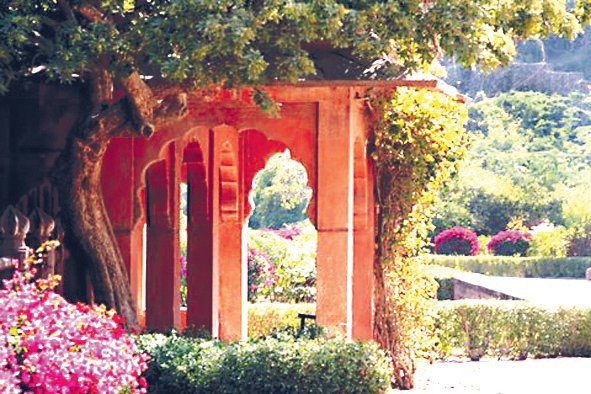LANDSCAPING AS PER VAASTU PRINCIPLES IN ANCIENT INDIA
Landscape and garden planning were the most essential features of town planning of ancient Indians. Our ancestors were worshippers of nature. Water and trees therefore had a unique importance in ancient Indian architecture.
A well laid out garden formed an inseparable aspect of a temple since Hindu Gods loved proximity of water and flower bearing trees / plants. Several varieties were held sacred because of their aesthetic and sanitary potential. Gardens were spread out evenly in towns, cities and palace complexes and were also provided with artificial water channels and tanks. Such was the importance attached to parks and gardens that the ‘Sthapati’ or chief architect was always provided with the services of a landscape architect. The poetic descriptions of the spring festival celebrated in ancient India ‘Ashokapushpaprachayika’, also give us a glimpse of the importance given to gardens. An Ashoks tree was supposed to flower only when the foot of a charming young girl pressed its roots by kicking it at the end of a dance with her left foot. An ‘Ashokvana’ – literally a forest of Ashoka trees was part of many a palace complex.
Apart from ‘Ashokapushpaprachayika’ or the festival of the gathering of Ashoka flowers, many other festivals were celebrated specially during spring in ancient India. The Suvasantaka was one of the merriest spring festivals in ancient India and was celebrated around Vasant Panchami (during the 1st / 2nd week of February). The ceremony of offering of lamps called ‘Deep daan’ was performed during this festival. The myriad of lighted lamps were set afloat on the sacred waters of rivers. On the day of ‘Vat Poornima’ (in the Hindu month of Jyeshtha; June / July), Hindu wives go around the ‘Vat Vriksha’ (Banyan tree) and pray for the health and well-being of their husbands and to request the same husband in subsequent lives.
Vatsyayana enumerates four types of gardens – Pramodudyaan for the enjoyment of Kings and Queens, Udyaan for the courtiers and commoners, Vrikshavaatika for ministers and Nandanvana dedicated to the Gods (Indra in particular). Since geometric patterns were followed for towns and cities according to ‘Vaastupurushamandala’, the gardens also assumed geometric forms where pavilions were placed either at the centre or at the ends. The so-called Mughal gardens of India were all in accordance with plans of the Hindu architecture following vaastu principles. It was the principle of ‘Chaarbagh’ (four gardens) which was followed. Its two axes were oriented towards the four cardinal points (N, S, E, W) and its basic square fitted into Hindu cosmology according to Andreas Vohlwahsen, author of ‘Living architecture – Islamic India’.
In the design of ancient Indian cities we find the same quadripartic divisions. As early as second millennium BC, Indian villages were being built with crossroads meeting in the town centre which had a huge tree under which the village Council / Elders met. The Cosmos axis appeared in Buddhist caves as an umbrella or ‘stupa’ or ‘chella’ (signifying an umbrella standing on a small island in a square lake). Some gardens had waterways crossing and meeting in the centre where a Baradari stood (12 pillared pavilion – a concept from the annals of Shilpa shastra). This tradition can be seen in Rajput palace gardens and various Mughal gardens (Humayun’s tomb). The use of plants and trees was specific to the use of magnifying the effect of the five elements.
The Sthapati enhanced the expression of the place to communicate its nature as a system of living things residing in a particular habitat. To this end he opened up woodland, put up a meeting house at a dominant point, accentuated topography or created an oasis in an arid place. Using his perceptive knowledge, he sharpened the rooted indigenous character by means of simplification or contrasting of the basic elements.
